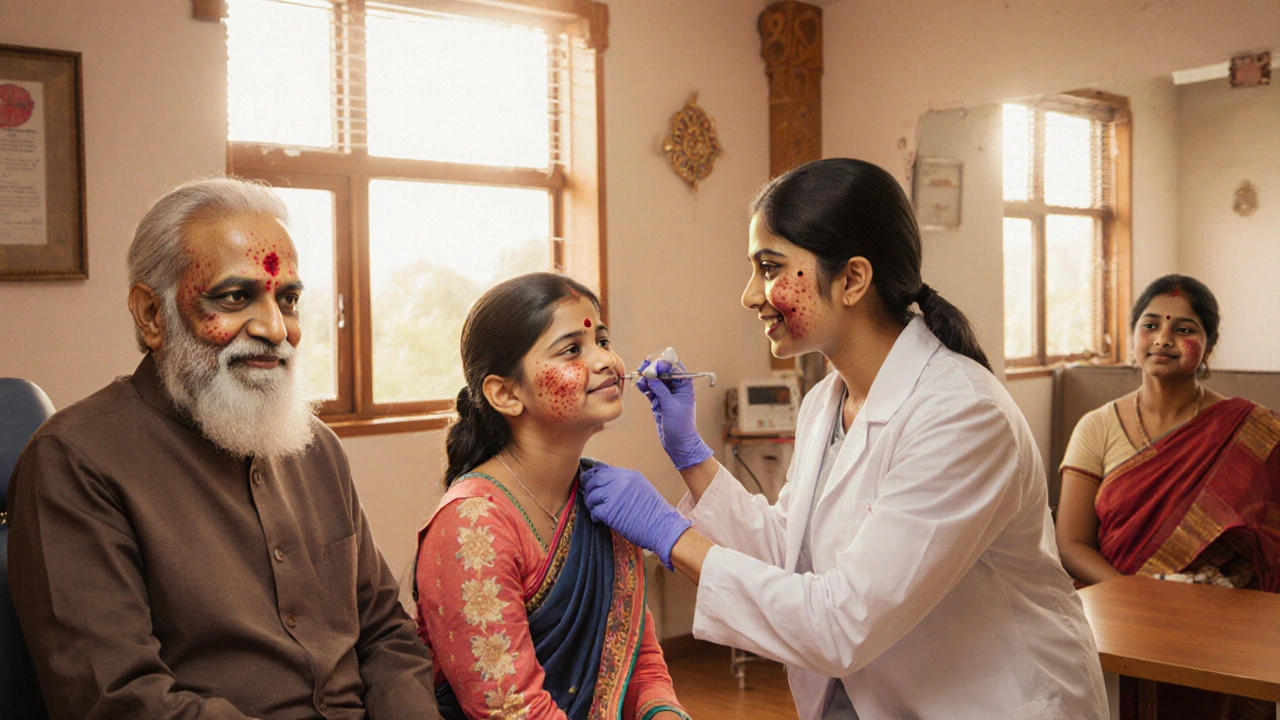Acne Treatment Guide: Simple Steps to Clear Skin Fast
Dealing with a breakout feels like a full‑time job, right? The good news is you don’t need a chemistry degree to get clear skin. A few everyday habits and the right products can turn the tide on pimples, oil, and red spots. Below is a no‑fluff plan you can start today.
Everyday habits that stop breakouts
First up, your routine matters more than any pricey serum. Wash your face twice a day with a gentle, sulfate‑free cleanser. Hot water strips natural oils and triggers more oil production, so aim for lukewarm water and a short 30‑second scrub.
Second, keep your hands off. Touching, picking, or resting your phone on your face spreads bacteria and inflames existing bumps. If you catch yourself doing it, keep a small bottle of hand sanitizer nearby for a quick reset.
Third, think about what you’re putting on your skin. Heavy creams, oily sunscreens, and fragrance‑laden moisturizers can clog pores. Look for “non‑comedogenic” or “oil‑free” labels. A lightweight gel or a water‑based moisturizer does the job without feeding acne.
Fourth, diet isn’t the sole culprit, but high‑glycemic foods—white bread, sugary drinks, and snacks—can spike insulin and make your skin produce more oil. Swap those for whole grains, fresh fruit, and plenty of water. Aim for at least eight glasses a day; hydration helps flush out toxins.
Top products and how to use them
When it comes to treatment, three ingredients stand out: salicylic acid, benzoyl peroxide, and retinoids. Salicylic acid (0.5‑2%) penetrates pores and dissolves the oil that fuels pimples. Apply it after cleansing, leave it on for a minute, then rinse or follow with a moisturizer.
Benzoyl peroxide (2.5‑5%) kills the bacteria that worsen acne. Start with the lowest concentration to avoid irritation, and use it on spot‑treated areas rather than the entire face.
Retinoids—like over‑the‑counter adapalene 0.1%—speed up cell turnover, preventing dead skin from clogging pores. Use it at night after your skin is clean, and follow with a soothing moisturizer to keep dryness in check.
If you prefer natural options, tea tree oil (5‑10%) works as a mild antiseptic. Dab a tiny amount on a cotton swab and apply to individual spots. It won’t replace clinical treatments but can be a handy backup.
Lastly, sunscreen is a non‑negotiable. UV rays darken post‑acne marks and can reverse the benefits of your treatment. Choose a broad‑spectrum SPF 30+ that’s labeled “oil‑free” or “gel” so you stay protected without clogging pores.
Stick to this routine for at least four weeks. Acne rarely clears overnight, but consistency beats every miracle cream. If you’re still seeing stubborn cysts after a month, it might be time to see a dermatologist for prescription‑strength options.
Remember, clear skin is a marathon, not a sprint. Simple habits, the right ingredients, and a bit of patience will get you there without breaking the bank.
What Does Dermatology Treat? A Complete Guide to Skin Conditions & Care
Discover the wide range of conditions dermatology treats-from acne and eczema to skin cancer-plus how specialists diagnose and manage each problem.

 Hair Care
Hair Care